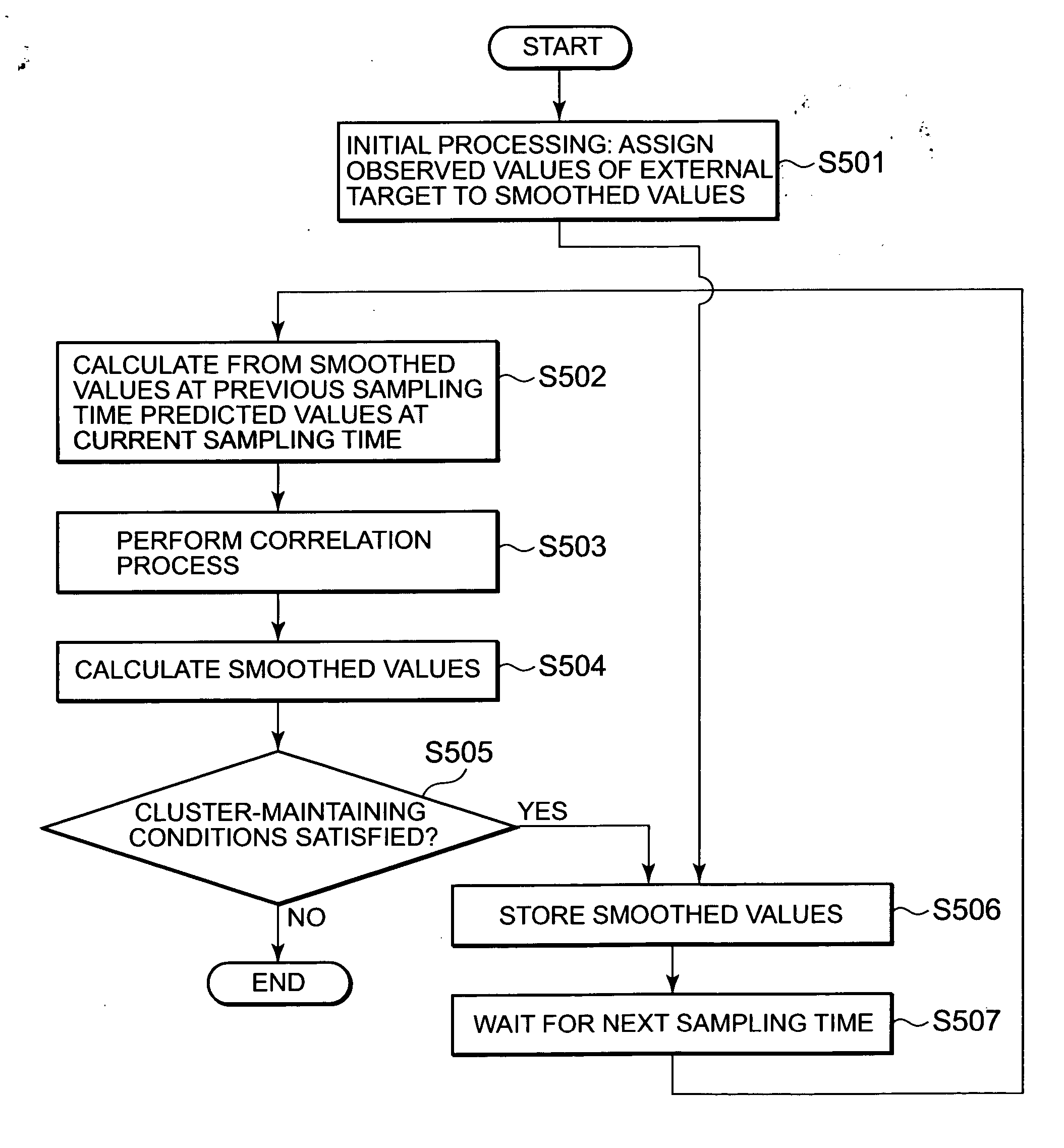Radar device
a technology of a radar and a detection device, which is applied in the direction of measurement devices, instruments, and devices using reradiation, can solve the problems of difficult access to high-accurate observed values, and achieve the effects of stable tracking, high accuracy and highly-accurate observed values
- Summary
- Abstract
- Description
- Claims
- Application Information
AI Technical Summary
Benefits of technology
Problems solved by technology
Method used
Image
Examples
embodiment 1
[0023]FIG. 1 illustrates a car equipped with a radar device according to Embodiment 1 of the present invention. In the figure, the radar device 2 according to Embodiment 1 of the present invention is installed in the front of the car 1. The radar device 2 radiates a beam forward from the car 1. A portion of the radiated beam is reflected by an object 3 that is located in front of the car 1, and comes back to the radar device 2. The radar device 2 receives the reflected beam, and performs signal processing, to detect the distance to the object 3, and the velocity and the direction of the object 3. According to the above-obtained information on the object 3, the car 1 performs control such as automatic braking for avoiding a collision, and adjusting seat belts in preparation for a collision. Consequently, it largely contributes to dramatically enhance safety of the car 1.
[0024]FIG. 1 is a block diagram illustrating the configuration of the radar device 2. The radar device 2 is a rada...
embodiment 2
[0094] In Embodiment 1, clusters are formed from targets that are close to each other, and the filtering for the targets that belong to the clusters is differently designated from the filtering for targets that do not belong to any of the clusters. In addition, in cases in which targets to be observed are close to each other, and move in parallel at a constant velocity, the tracking processing can be performed while regarding a cluster as a single target. A radar device according to Embodiment 2 of the present invention has such a feature.
[0095] The entire structure of the radar device according to Embodiment 2 of the present invention is illustrated in the block diagrams in FIG. 1 and FIG. 2 as in Embodiment 1. Because the components with the same numerals as in Embodiment 1 are similar to the corresponding components in Embodiment 1, the explanation will be omitted. In addition, the detailed configuration of a signal processor 17 is illustrated in a block diagram in FIG. 11.
[009...
PUM
 Login to View More
Login to View More Abstract
Description
Claims
Application Information
 Login to View More
Login to View More - R&D
- Intellectual Property
- Life Sciences
- Materials
- Tech Scout
- Unparalleled Data Quality
- Higher Quality Content
- 60% Fewer Hallucinations
Browse by: Latest US Patents, China's latest patents, Technical Efficacy Thesaurus, Application Domain, Technology Topic, Popular Technical Reports.
© 2025 PatSnap. All rights reserved.Legal|Privacy policy|Modern Slavery Act Transparency Statement|Sitemap|About US| Contact US: help@patsnap.com



